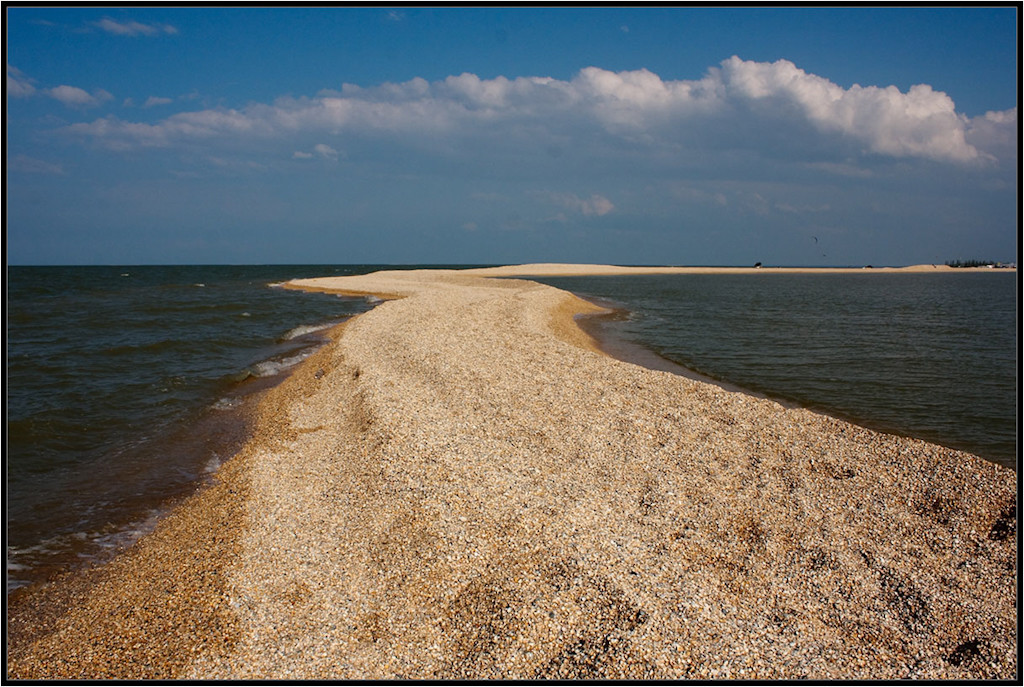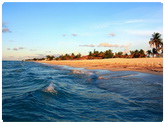| Quick Facts: | Sea of Azov |
|---|---|
| Countries: | Ukraine & Russia |
| Main Rivers: | Don & Kuban |
| Max. depth: | 14 m (46 Feet) |
| Temperature: | 0°C winter → 25–30°C summer (Avg. 11–12°C) |
| Salinity: | 11-13% |
| Area: | 39.000 km² (15.000 mi²) |
Brief Description of the Sea of Azov
The Sea of Azov is an arm of the Black Sea, located between the Crimean Peninsula, the east Ukrainian coast, and the north Caucasus. In ancient times it was known by the Latin name of Palus Maeotis (Lake Maeotis). It is connected with the Black Sea by the Kerch Strait. The Sea of Azov is approximately 210 miles (340 km) long and 85 miles (137 km) wide and has an area of 14,515 square miles (37,606 sq km). On its eastern part, the Sea of Azov forms the Gulf of Taganrog, where the Don River flows. In the western part, the Arabat Tongue, a 70-mile- (110-km-) long peninsula, separates the Azov Sea from the Sivash (Putrid Sea), a 1,000-square-mile (2,590-sq-km) salty backwater along the northeast coast of the Crimea.
The Sea of Azov is considered to be the world’s shallowest sea . It is a flat-bottomed sea, with a maximum depth of approximately 46 feet (14 meters) only. The Azov’s water, constantly replenished by the Don and Kuban rivers, is almost fresh. The coastal waters are frozen from December until February.
Economical Importance
The sea has an abundant supply of fish, the principal food fish being anchovies, pike, perch, bream, carp, herring, sturgeon and salmon. The main ports on the sea are Rostov-on-Don, Mariupol’, Taganrog, Azov, Berdyans’k, and Kerch. The main shipping route is the one connecting Kerch with Mariupol’. This route is used mainly for carrying Kerch iron ore to the Mariupol’ steel plants. A variety of other commodities are shipped on the
sea, including coal, salt, fish, and grain.





